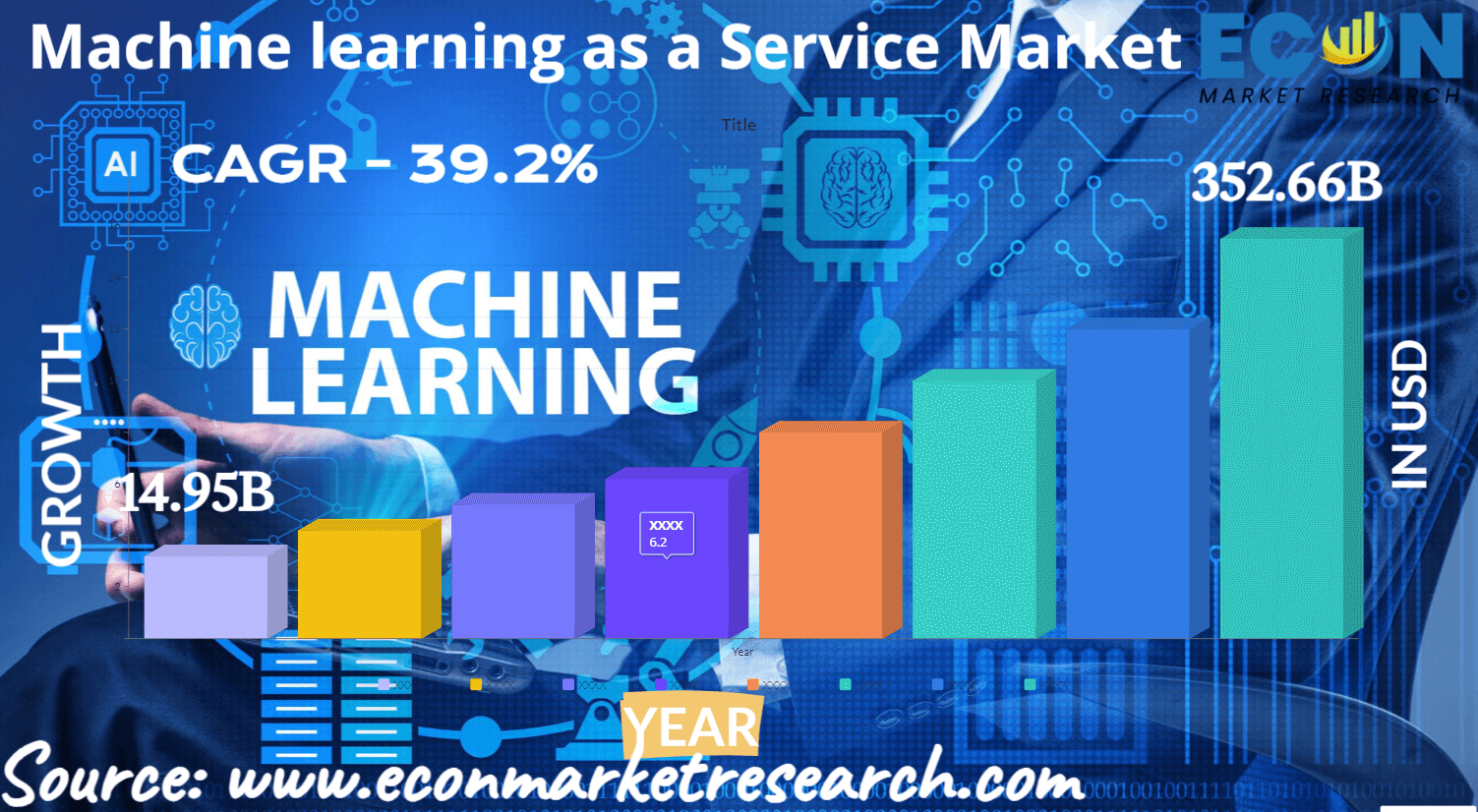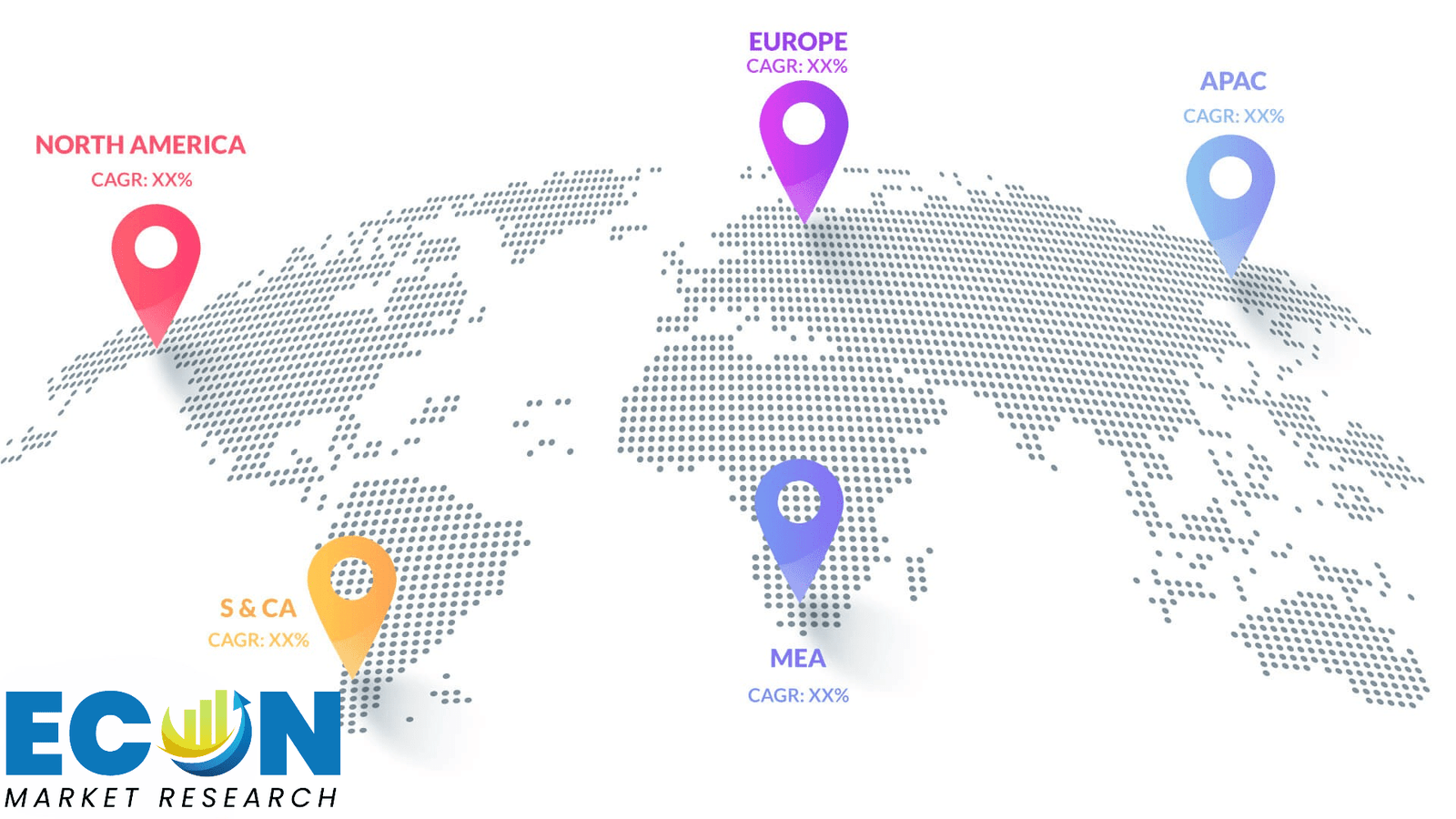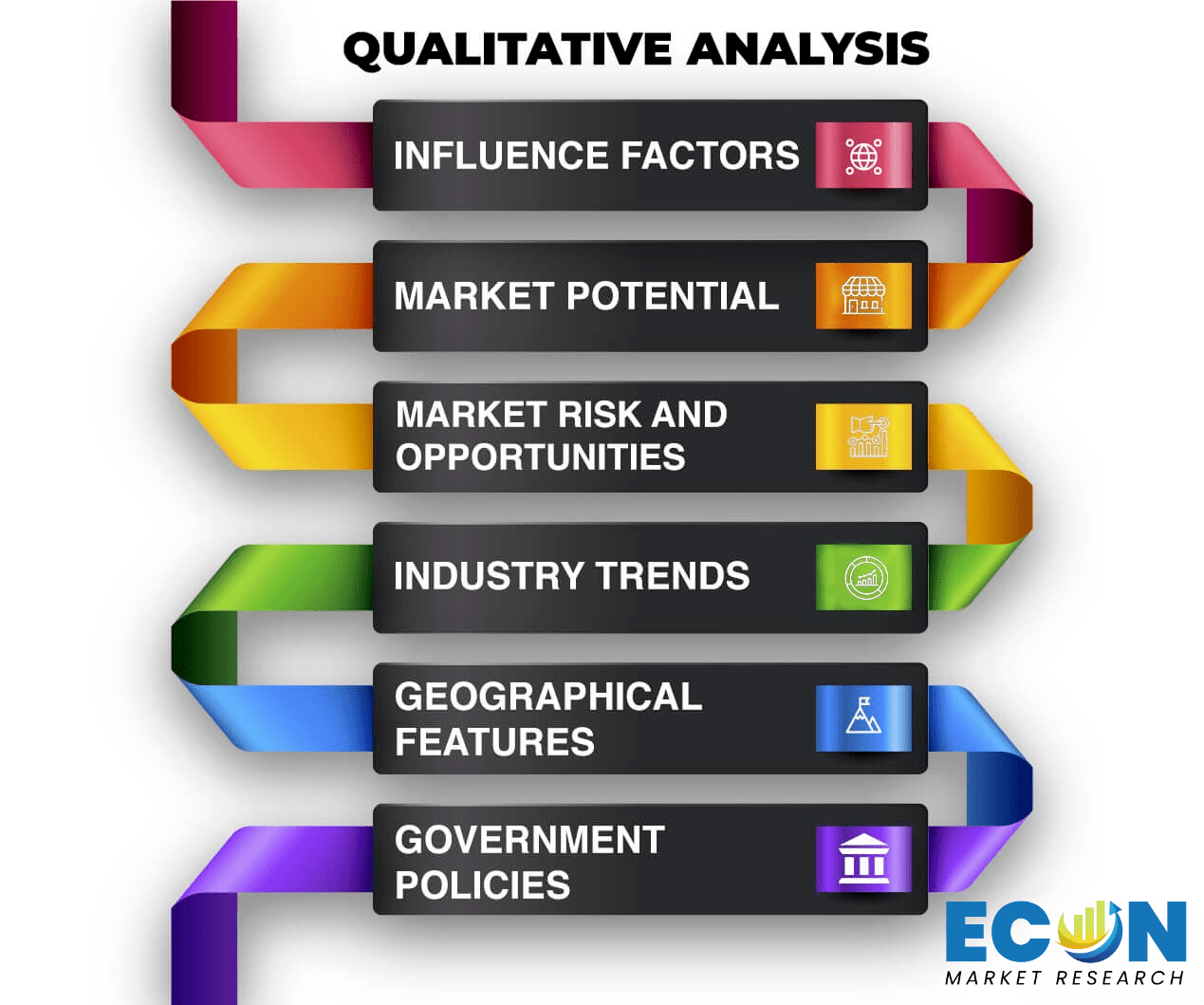Machine Learning as a Service (MLaaS) Market Size, Share, Trends, Growth, and Industry Analysis, By Organization Size (Large Enterprises, Small & Medium Enterprises), By Deployment Type (On-premise, and Cloud), By Component (Solution, and Services), By End Users (Aerospace and Defense, IT and Telecom, Energy and Utilities, Public sector, Manufacturing, Banking, Financial Services, Insurance, Healthcare, Retail, and Others), Regional Insights and Forecast to 2032
global machine learning as a service (MLaaS) market size was estimated at USD 7.1 billion in 2022, and it is expected to reach around USD 173.5 billion by 2032, growing at a CAGR of 37.9% during the forecast period.
Machine learning as a service (MLaaS) offers machine learning tools as part of cloud computing services. MLaaS platforms provide algorithms and model creation tools that enable enterprises to rapidly build, deploy, and scale machine learning services. These services can reduce the cost and complexity of developing machine learning-based applications, allowing businesses to use advanced data analytics capabilities without investing heavily in hardware and software infrastructure. The MLaaS model is poised to dominate the industry, with consumers having the choice of many alternative solutions customized for various business needs. Furthermore, the market for machine learning as a service is expected to grow as a consequence of factors such as increased cloud-based service usage, IoT (internet of things), automation, and consumer behaviour research. MLaaS offers flexibility, scalability, and cost-effectiveness by providing machine learning algorithms and models on a pay-per-use basis. Furthermore, these platforms can be used by developers and data scientists with minimal knowledge of machine learning to develop and deploy models quickly.

Many large IT companies, including Amazon, Google, and Microsoft, offer MLaaS platforms, while smaller startups are also entering the market. Industries that are particularly suited for MLaaS include healthcare, finance, and e-commerce, among others, and MLaaS applications include fraud detection, customer segmentation, predictive maintenance, and image recognition, among others. While MLaaS has numerous benefits, businesses should carefully evaluate the various options accessible to them and ensure that they have a clear understanding of their objectives and expectations before selecting a provider.
Machine Learning as a Service Market Report Scope & Segmentation
|
Report Attribute |
Details |
|
Estimated Market Value (2022) |
7.1 Bn |
|
Projected Market Value (2032) |
173.5 Bn |
|
Base Year |
2022 |
|
Forecast Years |
2023 – 2032 |
|
Scope of the Report |
Historical and Forecast Trends, Industry Drivers and Constraints, Historical and Forecast Market Analysis by Segment- By Organization Size, By Deployment Type, By Component, By End Users & By Region |
|
Segments Covered |
By Organization Size, By Deployment Type, By Component, By End Users & By Region |
|
Forecast Units |
Value (USD Billion) |
|
Quantitative Units |
Revenue in USD billion and CAGR from 2023 to 2032 |
|
Regions Covered |
North America, Europe, Asia Pacific, Latin America, and Middle East & Africa. |
|
Countries Covered |
U.S., Canada, Mexico, U.K., Germany, France, Italy, Spain, China, India, Japan, South Korea, Brazil, Argentina, GCC Countries, and South Africa, among others |
|
Report Coverage |
Market growth drivers, restraints, opportunities, Porter’s five forces analysis, PEST analysis, value chain analysis, regulatory landscape, market attractiveness analysis by segments and region, company market share analysis, and COVID-19 impact analysis. |
|
Delivery Format |
Delivered as an attached PDF and Excel through email, according to the purchase option. |
Market Drivers
One of the primary drivers of the machine learning as a service market is the growing demand for cloud computing services. This trend allows users to access machine learning resources and capabilities using cloud services without having to invest in hardware or software infrastructure. Cloud-based machine learning also allows businesses to access and analyse large amounts of data in a scalable and cost-effective manner. Popular cloud providers such as Amazon Web Services (AWS), Microsoft Azure, and Google Cloud Platform offer machine learning services for natural language processing, image analysis, and predictive modelling. Furthermore, cloud providers often offer pre-trained models that can be easily integrated into businesses. The adoption of cloud computing in machine learning has had a positive impact on industries such as healthcare, finance, and retail. As technology continues to evolve, cloud-based machine learning is expected to become even more prevalent in the future.
Market Restraints
The shortage of skilled consultants capable of implementing machine learning as a service is a critical challenge for businesses looking to adopt these technologies. Many businesses struggle to find skilled personnel with the mandatory experience in the sector. As a result, they can be forced to outsource their efforts to third-party providers, which can be costly and time-consuming. The growing demand for machine learning services has led to increased competition among businesses for talent, putting further pressure on companies to offer competitive salaries and benefits packages.
Covid-19 Impact Analysis
The COVID-19 pandemic has had a substantial impact on the market for machine learning as a service (MLaaS). As organizations of all sizes seek ways to automate activities, enhance productivity, and make better judgements in the face of uncertainty, the epidemic has pushed the adoption of MLaaS. The COVID-19 epidemic has introduced a slew of new issues for organizations, including the need to manage remote workforces, track supply chains, and forecast demand. MLaaS can assist businesses in addressing these difficulties by giving them access to cutting-edge machine learning technology and experience. The COVID-19 epidemic has hastened the transition to cloud computing. This is because cloud-based MLaaS solutions have numerous benefits, including scalability, flexibility, and cost-effectiveness.
Segments Analysis:
Organization Size Insights
The global machine learning as a service market segmentation by organization size includes large enterprises and small and medium enterprises (SMEs). The market is dominated by small and medium enterprises (SMEs). SMEs use MLaaS because the machine learning application provides dynamic data. In addition to delivering real-time data, machine learning algorithms can predict future events via predictive analytics. Machine learning technologies can help SMEs fine-tune their supply chain by anticipating product demand and recommending the time and volume of supplies needed to meet consumers' expectations.
Component Insights
Based on component, the global machine learning as a service market segmentation includes solution and service. The service segment dominates the machine learning as a service market and is projected to be the fastest-growing segment during the forecast period. This is due to the fact that participants in the industry are focusing on implementing technologically advanced solutions to improve the utilization of machine learning services.
End Users Insights
Based on end users, the global machine learning as a service market segmentation includes aerospace and defence, IT and telecom, energy and utilities, the public sector, manufacturing, banking, financial services, insurance, healthcare, retail, and others. The market is dominated by the healthcare industry. The use of machine learning services in the healthcare industry for cancer detection as well as checking ECGs and MRIs expands the market in the healthcare sector.
Regional Analysis
The North America region is expected to continue leading the global machine as a service market. The presence of significant technological manufacturers, strong cloud infrastructure, and a dynamic startup ecosystem have all contributed to the expansion of MLaaS in this region. The United States, in particular, has seen widespread use of MLaaS across various industries such as healthcare, finance, e-commerce, and technology. Furthermore, the market is expected to expand throughout the forecast period due to increased defence spending and technological advancements in the telecommunications industry. Services such as cloud apps and security information are anticipated to drive the market. The major industry presence of businesses such as Google, IBM, Microsoft, and Amazon Web Services, as well as their diverse product offerings, have all contributed to the rise in demand for machine learning in this field.

Competitive Landscape:
The machine learning as a service (MLaaS) market is fragmented. There are large number of suppliers offering MLaaS solutions, and the market is constantly changing. Due to this fragmentation, it is challenging for organizations to select the right MLaaS supplier.
Key players operating in the global machine learning as a service market are:
Recent Development:
Machine Learning as a Service Market Report Segmentation
|
ATTRIBUTE |
DETAILS |
|
By Organization Size |
|
|
By Deployment Type |
|
|
By Component |
|
|
By End Users |
|
|
By Region |
|
|
Customization Scope |
|
|
Pricing |
|
Key Benefits of the Report
Research Methodology
Our research methodology has always been the key differentiating reason which sets us apart in comparison from the competing organizations in the industry. Our organization believes in consistency along with quality and establishing a new level with every new report we generate; our methods are acclaimed and the data/information inside the report is coveted. Our research methodology involves a combination of primary and secondary research methods. Data procurement is one of the most extensive stages in our research process. Our organization helps in assisting the clients to find the opportunities by examining the market across the globe coupled with providing economic statistics for each and every region. The reports generated and published are based on primary & secondary research. In secondary research, we gather data for global Market through white papers, case studies, blogs, reference customers, news, articles, press releases, white papers, and research studies. We also have our paid data applications which includes hoovers, Bloomberg business week, Avention, and others.

Data Collection
Data collection is the process of gathering, measuring, and analyzing accurate and relevant data from a variety of sources to analyze market and forecast trends. Raw market data is obtained on a broad front. Data is continuously extracted and filtered to ensure only validated and authenticated sources are considered. Data is mined from a varied host of sources including secondary and primary sources.

Primary Research
After the secondary research process, we initiate the primary research phase in which we interact with companies operating within the market space. We interact with related industries to understand the factors that can drive or hamper a market. Exhaustive primary interviews are conducted. Various sources from both the supply and demand sides are interviewed to obtain qualitative and quantitative information for a report which includes suppliers, product providers, domain experts, CEOs, vice presidents, marketing & sales directors, Type & innovation directors, and related key executives from various key companies to ensure a holistic and unbiased picture of the market.
Secondary Research
A secondary research process is conducted to identify and collect information useful for the extensive, technical, market-oriented, and comprehensive study of the market. Secondary sources include published market studies, competitive information, white papers, analyst reports, government agencies, industry and trade associations, media sources, chambers of commerce, newsletters, trade publications, magazines, Bloomberg BusinessWeek, Factiva, D&B, annual reports, company house documents, investor presentations, articles, journals, blogs, and SEC filings of companies, newspapers, and so on. We have assigned weights to these parameters and quantified their market impacts using the weighted average analysis to derive the expected market growth rate.
Top-Down Approach & Bottom-Up Approach
In the top – down approach, the Global Batteries for Solar Energy Storage Market was further divided into various segments on the basis of the percentage share of each segment. This approach helped in arriving at the market size of each segment globally. The segments market size was further broken down in the regional market size of each segment and sub-segments. The sub-segments were further broken down to country level market. The market size arrived using this approach was then crosschecked with the market size arrived by using bottom-up approach.
In the bottom-up approach, we arrived at the country market size by identifying the revenues and market shares of the key market players. The country market sizes then were added up to arrive at regional market size of the decorated apparel, which eventually added up to arrive at global market size.
This is one of the most reliable methods as the information is directly obtained from the key players in the market and is based on the primary interviews from the key opinion leaders associated with the firms considered in the research. Furthermore, the data obtained from the company sources and the primary respondents was validated through secondary sources including government publications and Bloomberg.
Market Analysis & size Estimation
Post the data mining stage, we gather our findings and analyze them, filtering out relevant insights. These are evaluated across research teams and industry experts. All this data is collected and evaluated by our analysts. The key players in the industry or markets are identified through extensive primary and secondary research. All percentage share splits, and breakdowns have been determined using secondary sources and verified through primary sources. The market size, in terms of value and volume, is determined through primary and secondary research processes, and forecasting models including the time series model, econometric model, judgmental forecasting model, the Delphi method, among Flywheel Energy Storage. Gathered information for market analysis, competitive landscape, growth trends, product development, and pricing trends is fed into the model and analyzed simultaneously.
Quality Checking & Final Review
The analysis done by the research team is further reviewed to check for the accuracy of the data provided to ensure the clients’ requirements. This approach provides essential checks and balances which facilitate the production of quality data. This Type of revision was done in two phases for the authenticity of the data and negligible errors in the report. After quality checking, the report is reviewed to look after the presentation, Type and to recheck if all the requirements of the clients were addressed.
